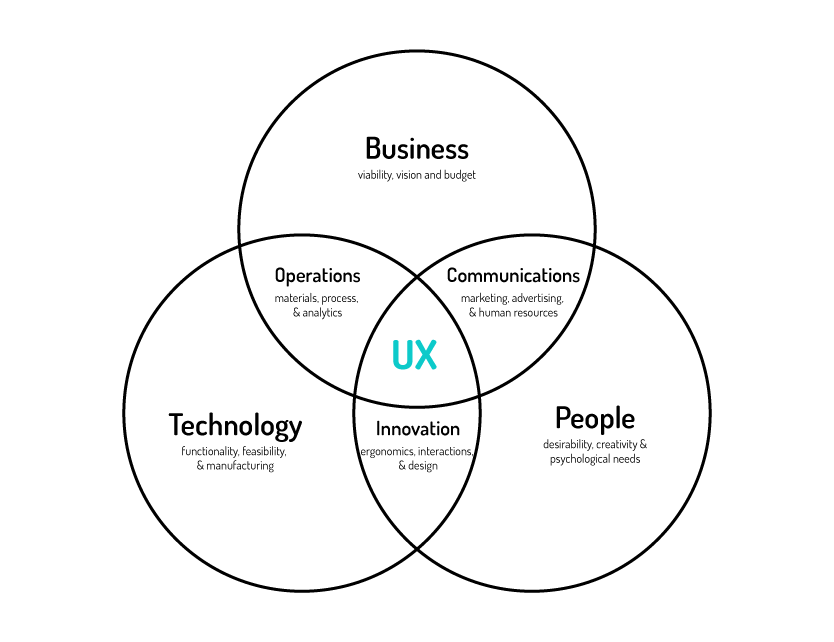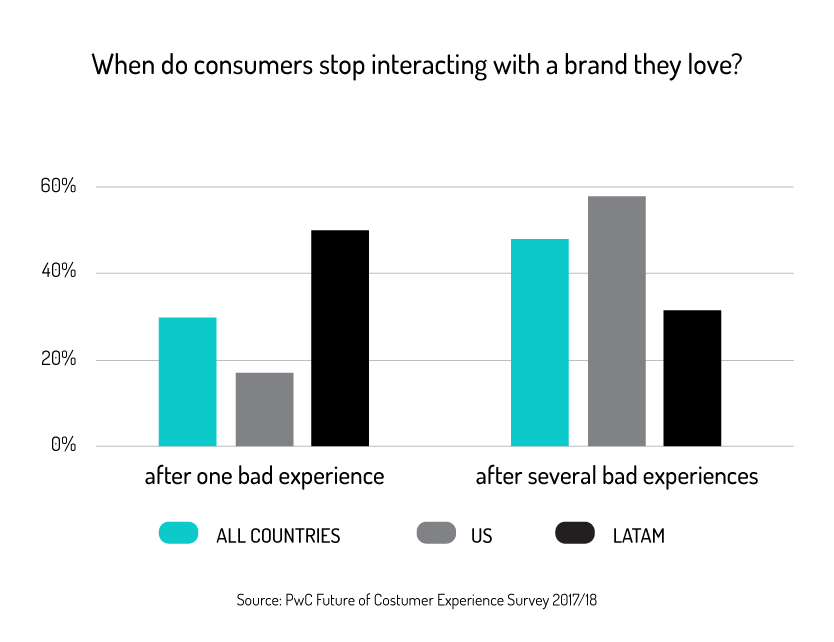In our daily professional routines, we often worry about business strategies, deadlines or budgets because we need to improve sales, engage with more customers or overcome our competitors. But there is a more effective way to achieve goals.
Most of us don't LOOK TO the service IN A USER PERSPECTIVE, which is crucial TO IMPROVE THE CUSTOMER EXPERIENCE. What does your AUDIENCE feel when using your service?
What is User Experience (UX) and what are its benefits?
A term usually linked with the digital world; however, the field comes a long way before. Officially, this term was created in 1993 by Don Norman, a psychologist designer. He attributed this term to his team at Apple Computer to describe the broad set of activities they had.
"(…) UX is everything, is the way you experience the world, is the way you experience your life, is the way you experience the service … or an app or a computer system, but is a system. Is everything." – Don Norman, 1:24
UX has never been so important in the modern business world. With companies like Amazon, Google, Apple, IBM, GE Healthcare investing in this field to convert users into customers, other companies are also investing to prevent losing market share. These companies know that UX is a secret weapon to growth.
PwC found that 32% of the customers would leave a brand they loved after just one bad experience. That's why AirBnB's founder, Joe Gebbia, attributes their $30 billion growth to UX investment.
KNOW YOUR CUSTOMER AND YOUR BUSINESS
UX is a human-centred design approach that places equal value on the customer experience and the business process, so the first requirement for an outstanding user experience is to meet the customer's needs and desires. With UX studying human behaviours within a service and the service itself, it's possible to identify pain points inside the business service and solve them.
Know your customers and, most of all, know your business. Analise all channels, services, touchpoints, and interactions that the customer has in your business, and see how you can resolve and change it, but always focus on one area at the time.
UX helps organisations see an end-to-end, surface-to-core perspective, enabling them to understand services from a customer perspective. With this, the companies can design new services that combine the customer's needs and desires with the business requirements and objectives.
UX IS A GREAT TOOL FOR ROI
Nowadays, most companies don't invest enough in UX, and as a result, trillions of dollars are lost (for example, at e-commerce). With UX as a tool for business, there is a considerable return on investment, the so-called ROI, by reducing the business costs and increasing business incomes.
ROI is a financial metric used to analyse the scope of investment and figuring out the range of improvements. But How? MIT showed that UX could stop the inefficiencies and waste time by up to 50%. For example, lower shopping cart abandonment, reduce churn to increase product consumption.
UX improvements will deliver more positive product reviews, higher brand loyalty, reduced user errors, and better conversion rates. A study by Forrester has shown that companies that invest in UX see lowered costs of customer acquisition, decreased support cost, increased customer retention and increased market share.
Investment in UX is often the difference between businesses that grow and those that stumble or even fail.
— Roman Nurik, designer and design advocate, Google
IBM report on user-centred design supports that every $1 invested in the UX strategy have an outcome between $10 and $100, so that's an ROI of 1,000%, and 86% of consumers are willing to pay more for a better customer experience. The Bank of America saw a 45% increase in online banking registration just after a UX redesign.
"Once you know what your customers want, you'll be able to align your business with their expectations and boost your sales effortlessly."
BENEFITS OF USING UX
Increase your revenue and retain your customers
Using UX to eliminate blocks that cause frustration, confusion, and wasted time leads a customer to quickly convert into a purchase. UX can increase sales and convert a user into a loyal consumer that makes referrals.
Reduce business operational costs
UX reduces overall costs and money spent on referral rates, sales and marketing. The most significant savings in expenses for a company comes from the decreasing efforts in customer service.
Increase productivity
Investing in UX is also a great way to save valuable employee time. It can minimise time spent reworking features, reduce unnecessary work, and save employee's time, leaving them free to engage in business generation and other important goals. Companies that invest in UX are innovative and release their products faster.
Keeps your customer loyal
Satisfied customers are at the core of any business, and there is nothing that users appreciate more than a business that meets and anticipates their needs. A study by Bain & Company found that just a 10% increase in user retention increases a business' value by an average of 30%.
OUR APPROACH
ALTA UX/UI design team is involved in several user experience projects that combine Service/Product goals with customer's needs, to improve business revenue.
We focus on providing the best solutions within the customer budget to identify customer's needs and provide the best disruptive digital solutions.
The "ALTA process or method" has four well-defined stages with pre-defined goals and expected outputs:
Discover, Craft, Create and Develop.
All these stages are worked closely with our customers, developing a solution that results from cross teamwork.
DISCOVER - In the first phase of the process, the goal is to gather all evidence that will support the decisions taken henceforth, ensuring that no decision is made based on vague assumptions. In this stage, the ALTA UX team will analyse all the business model's relevant data, user needs and pains, interview key users, conduct workshop sessions and all the necessary field research analysis.
CRAFT - In the second phase, the ALTA UX team will define the user stories and a detailed user experience for the solution based on the Discover stage's conclusions. The UX team will work closely together with the client team. At the same time, in a parallel process, ALTA will make a technical assessment checkpoint. The goal is to guarantee that all requirements and ideas generated are realistic concerning their implementation and achievable given the available time and budget.
CREATE - In the third phase, the ALTA UI design team will sketch the solution's User Interface and define the styling guide.
DEVELOP - In this stage, the ALTA development team will focus only on logic, programming/coding and technical implementation. With all the UX and UI already defined, dev errors and misunderstandings (colours, fonts and measurements, interactions, flows, behaviours, functionality, etc.) are reduced to the minimum.
Take your customer experience initiatives to the next level. Let's change the future together.
Shall we talk?


